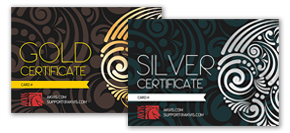AKVIS HDRFactory 8.0 | High Dynamic Range Images: Brighter than Reality!
AKVIS HDRFactory — Reviews:
AKVIS HDRFactory
(Mircea Dragomir, Softpedia, March 28, 2019)After you take tons of photos on a holiday trip, several mirror pictures, or a simple selfie, there’s a high chance you take them through a processing program before showing them to others. As you can’t do this in Windows Paint, a search over the web can lead you to a stunning array of alternatives, which is also the case with AKVIS HDRFactory.
The application’s main purpose is to let you apply HDR effects to any picture you provide, for an enhanced feel. However, you’ll be happy to see that there are some more things you can manage, so you’re going to spend more than a few seconds.
All things considered, we come to the conclusion that AKVIS HDRFactory is a quick and powerful way of bringing a bit more light to pictures, add some cool effects, or simply crop them to eliminate unwanted objects.
Migliora le tue foto con Akvis: Refocus e HDRFactory
(Salta in Padella, 3/2016)Questi 2 software li ho trovati utilissimi, intuitivi, hanno notevolmente ridotto il numero di scatti e velocizzato il lavoro di fotoritocco. Con pochi clic le mie immagini risultano nitide e i colori accesi, simili alla visione dal vivo.
AKVIS HDRFactory 1.0:
Create HDR images to form multiple or single exposures
(Digital Camera Essentials #92, 06/2011)
HDRFactory works in one of two ways. Its most useful application is that it will merge different exposures, but it can also replicate HDR effects from a single image. The effect can be left realistic, giving a perfectly exposed result, or a more creative, stylised result can be made. Built into the software is a deghosting tool for getting rid of artefacts created by the merging process, and there are various controls for altering the colour, saturation and brightness.
The program does a good job of merging different exposures and it is relatively easy to create a good, well-exposed version of your shot.
Software Review - AKVIS HDRFactory
(Mark Mattson, Computer Users of Erie, Horizons, 06/2011)This is a neat little application to have and use. AKVIS definitely has a winner in this one, and it’s only in the v1 release. Can’t wait to see what they have in store for future versions.
...
I now shoot all my photos as HDR source image sets. It will make it so much easier to produce HDR images this way. And HDRFactory will be the fastest and easiest way to produce the final images. If you want to plunge into this hot trend, this is the way to go!
Software Review: AKVIS HDRFactory 1.0
(The Fire Ant Gazette, 4/2011)High Dynamic Range (HDR) images are all the rage nowadays. A quick scroll through this showcase of HDR photography shows why: HDR images can be dramatic and hyper-realistic.
HDR images exhibit a greater range between the lightest and darkest areas of an image than normally captured by a camera. The goal is to embue the image with the same dynamic range that the human eye can record (or even more, if the desired effect is artistic rather than realistic).
Akvis HDRFactory
(Silvano Dotti, Multimela, 4/2011)Non è la prima volta che parlo di un prodotto della AKVIS, ma questa volta lo faccio con vero entusiasmo perché, dopo aver impazzito abbastanza con Photoshop Elements (non uso programmi crackati, e PS costa troppo...) per ridurre una brutta ombra da una foto scattata qualche giorno fa, ho scoperto che con pochi tocchi sulle regolazioni di AKVIS HDRFactory (multilingue tra cui l'Italiano!) sono riuscito ad ottenere risultati ancora migliori senza laboriose selezioni di zone o maschere pur non disponendo di due foto scattate con diversa esposizione.
Create High Dynamic Range Images With Akvis HDRFactory
(Gregory Scoblete, Your Digital Life, 03/2011)The program essentially creates HDR images where there were none before – adding some dramatic flare to your photos (it can also do color corrections as well). It does this in one of two ways – by merging multiple photos of the same image taken at different exposures or by applying adjustments to a single image.
I played around with the standalone application for Windows and was pretty impressed with how easy it was to use. Working with a single screen, you can import a photo and work with a series of sliders to make tone corrections, depth, gradient contrast, smoothing, local contrast and color intensity changes (if you don’t know what any of those terms mean, the software helpfully has a text box in the lower right hand corner that explains just what they are).
Akvis HDR Factory : un nouveau logiciel HDR pour Windows et Mac
(Volker Gilber, QuestionsPhoto, 03/2011)Akvis, déjà éditeur de nombreux logiciels destinés aux photographes et graphistes, annonce un nouveau logiciel spécialisé. HDR Factory maîtrise à la fois la création d’une image HDR à partir d’une série d’images bracketées et le “toning” (tonemapping) d’une seule image, destinée à reproduire le rendu rehaussé d’une image HDR sans pour autant augmenter la plage dynamique.
Akvis HDRFactory, foto in HDR facili e versatili
(Mauro Notarianni, Macity, 3/2011)HDRFactory è una nuova applicazione che permette di creare immagini HDR da una serie di scatti con diversa esposizione o da una fotografia...
AKVIS HDRFACTORY V.1.0: SPEZIAL-TOOL FÜR HDR-FANS
(picspack.de, 03/2011)Die komfortable HDRFactory funktioniert am Besten mit mehreren Bildern, bei denen unterschiedliche Belichtungszeiten manuell ausgewählt wurden. Dafür empfiehlt sich natürlich die Verwendung eines Stativs, auch sollte das Motiv nicht allzu beweglich sein. Alternativ kann HDRFactory auch aus einem einzigen Bild ein HDR-Bild erstellen (sog. Pseudo-HDR). Um hier zu passablen Ergebnissen zu kommen, sollte möglichst ein RAW-Bild als Ausgang genommen werden. Dies kann hilfreich sein, wenn man ein HDR-Bild aus bewegten Motiven machen möchte oder von älteren Aufnahmen.



